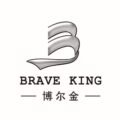
Laser welding, a transformative welding methodology, employs a laser beam to intricately fuse metals and thermoplastics, setting new standards for precision and efficiency. This advanced technology excels across a spectrum of applications, offering unparalleled benefits in diverse industries.
Precision in Motion: Laser Welding Dynamics
Laser welding operates on two fundamental modes: conduction-limited welding and keyhole welding. The former, prevalent at power densities below 10^5 W/cm2, manifests as surface-level energy absorption, resulting in high width-to-depth ratios. Conversely, keyhole welding, at higher power densities exceeding 10^6-10^7 W/cm2, triggers material vaporization, forming a ‘keyhole’ filled with metal vapor or plasma. This innovative approach prevents molten collapses, facilitating deep penetration welding and achieving welds with remarkable depth-to-width ratios.
Keyhole Choreography: Understanding the Welding Process
The keyhole, a dynamic player in laser welding, enhances the coupling of the laser beam with the workpiece, optimizing the welding process. Traversing the keyhole along the joint or moving the joint concerning the laser beam achieves deep penetration welding, creating welds characterized by extraordinary precision and depth.
Surface tension becomes the maestro, orchestrating molten material flow. The material at the keyhole’s leading edge flows around the cavity to the back, where it solidifies, forming a weld with a distinctive chevron pattern pointing backward. This visual narrative encapsulates the journey from initiation to completion in the laser welding process.

Applications and Advantages of Laser Welding
Laser welding’s versatility finds expression across industries:
- Automotive and Aerospace: Used for joining intricate components such as body panels, engine parts, and aircraft structures.
- Medical Devices: Essential in crafting precise welds for items like pacemakers, dental implants, and surgical instruments.
- Electronics: Integral to the production of circuit boards, sensors, and complex components in smartphones and laptops.
- Jewelry Manufacturing: Enables both manual and automated welding for intricate designs.
- Mold Tools and Dies: Facilitates the repair of manufacturing tools with minimal finishing work.
Advantages of laser welding include:
- Precision: Ensures meticulous welds with high accuracy.
- Speed: Rapid melting with minimal heat spread allows for efficient welding.
- Versatility: Joins various materials, including metals, plastics, and ceramics.
- Quality: Produces high-quality welds with consistent mechanical properties.
- Automation: Easily adaptable to automated systems, ensuring precision and repeatability.
Challenges and Considerations
Despite its prowess, laser welding faces certain challenges:
- Material Limitations: Some plastics and ceramics pose challenges due to thermal and chemical reasons.
- Safety: Intense light and heat generated necessitate proper safety measures, including eye protection.
- Equipment Cost: Initial costs can be high, potentially limiting accessibility for smaller businesses.
Shaping the Future: Laser Welding’s Endless Potential
In conclusion, laser welding emerges as a beacon of innovation in the welding landscape. Its dynamic modes, coupled with the choreography of the keyhole, illuminate a path towards unmatched precision. With applications spanning various industries and a host of advantages, laser welding not only defines contemporary manufacturing but also shapes a future where welding is synonymous with precision, quality, and efficiency.


